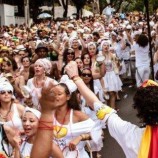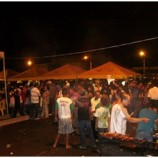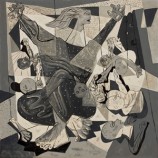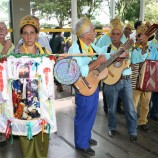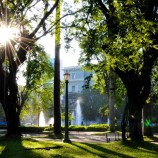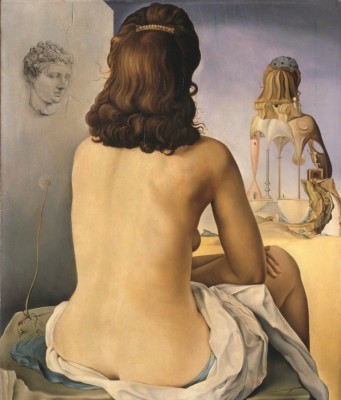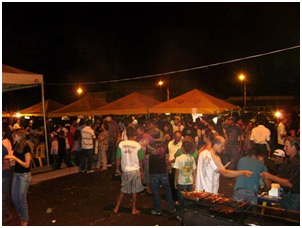

Belo Horizonte was Brazil’s first planned capital city. The urban layout of the city is modeled on Washington, the U.S. capital, a criss-cross of wide arterial two lane avenues, and a mesh of internal streets in a square-lined format. BH, as it is called, was inaugurated in 1897 to be the capital of the state of Minas Gerais, General Minning, designed to receive all the government staff that came in from Ouro Preto, Black Gold, the former colonial state capital.
The Minas Tenis Clube, acronym MTC or simply Minas, was built as a leisure club to attend the staff, but was open to the entire population of the newly formed city. The MTC certainly has grown over the years. I remember when it was just that little club on Bahia St. right next to the Liberty Palace, government seat until the year of 2008. Currently, there is the Minas II in the district of Mangabeiras and other unity in the country side.
The club was originally home to the former wealthy class. It is very difficult to acquire a share in order to join a select fraternity such as theirs. The price boarders around $30.000 reais each, $20,000 dollars.
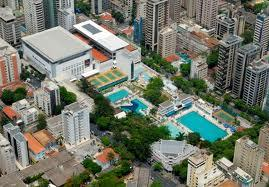
Let us note in passing that the of MTC is yet another result of the embezzlements of the rich and powerful in public patrimony. I remember, in the time, Deputy Paulo Campos Guimarães, who was openly critical of a club designated for public servants to be quietly and deftly transferred to one hundred of the richest people, who at the time were homeowners, builders, bankers, foreign exchange brokers and related areas.
Since 1972, parting from my employment relationship with Mendes Junior, Brazil’s largest construction company back then, whose owner was the first president of MTC, I began to frequent the place which was at that time unavailable to the general public.
Competing with the feijoada, traditional bean stew relished all over Brazil, at the Athletic Mineiro Club and with the average smudge glass pub, like the one on Avenida Antonio Carlos, 101, Minas’ feijoada was our sin of gluttony committed every Saturday.
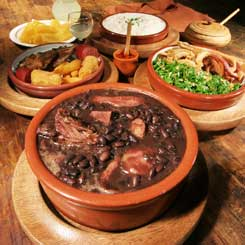
Feijoada, for our foreign readers, is a dish that was invented on accident by the Brazilian slaves, as was cachaça, the ideal drink to accompany this succulent plate. During the times of slavery, in the white slave owner’s house, the unwanted or “poor” parts of the pork were discarded and given to the slaves. Since they took so long to cook, and beans being the same way, the habit arose of cooking them together. Many spices were then added, especially hot peppers. It was a perfect combination and, the only way to fully appreciate this cultural delicacy it is by experimenting it firsthand.
The Minas Club in fact represented the most conservative of the elite class in the capital city of Belo Horizonte. Once in November 1972, I took a colleague of mine out, Afrânio, who came from Mato Grosso do Sul State to work in the same construction company as I, to enjoy the “divine feijoada” at the club. In the lobby, a man impeccably uniformed, as is the house custom, had been previously instructed to “inform” us that this Saturday lunch was for “members only.” Incidently, Afranio was black. On another occasion, a few years ago, the club’s management told me that they had been advised by a consultant named Joseph Dominic to install gutters on their marquees so that the homeless population would not spend the night around the vicinity. Until recently, the nannies who accompanied the children of members were dressed in archaic plaid uniforms to differentiate themselves from the madams and their daughters.
With that said, let’s get back to the lunch. Expensive. Quite expensive. But I can still give myself such luxuries, even if only once in a lifetime. In today’s case, there was a very unexpected question. We went out planing to eat the feijoada of the year, as I always like to do in the cold season, at the Restaurante Mosteiro on Savassi, but when we arrived the place was closed. I hope only temporarily.
We then left for The Minas. At the entrance there was that same style, with a feeling still somewhat discriminatory with the porters wearing those uniforms so not to be confused with the “doctors” that go there to stuff themselves silly. The Minas is still amazing, in spite of everything, it offers the very best. The waiters there are of the very finest people. Right away they greet me. “Good afternoon, doctor” they say with a slick modern name tag, and the style of a well-trained staff.
I observe that the traditional tables and chairs with original leather on display are gradually replaced by more up to date style furniture. The choice of changing the antique furniture arrangement is another way to divulge the status and presence of the place. I’m glad that Minas could overcome traditional habits and prime itself in offering the very best taste in traditional cuisine of Minas Gerais.
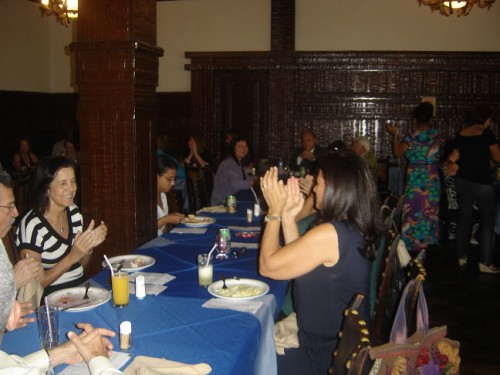
I watch attentively the people here as well, their attitudes and behaviors. Two ladies arrive, both over sixty years old, choose a side table in a well-protected corner and wait. At a signal from one of them, a waiter appears, listens to their requirements and leaves. A little while later comes along another waiter, smiling, pats the woman on the back and says he is always at her service. The accompanying woman, who seemed to be invited by the Miss, displayed shows of admiration of her friend’s prestige, and all in full view.
In a very choice place, you can find a fine self service lunch with diverse recipes and dishes for all tastes. Feijoada, after many years being served in individual pots, is now served all you can eat in a plentiful buffet. All of the complements, as the side dishes of feijoada are called, are carefully identified in large pots. The extremely fine chopped collard greens are an essential component. The Minas is still the only place I know where they serve that special sauce made with the bean broth, chives, onion bulbs, garlic and whole peppers.
In Belo Horizonte, a blog called “popsicle mouth,” advises to arrive promptly at noon to avoid having the bean stew watered down, the traditional way of increasing the amount in order to attend more customers.
At 12 o’clock noon the guests start arriving. At 1:00 PM the hall is packed. Older women, with rare exceptions prefer to sit inside the hall, as do the traditional families. There are a those kind of tables that are so captivating with the older, fat and puffy gentlemen who talk non-stop about everything. Beginners and younger people prefer the balcony overlooking the sports arena.
We ate very little in comparison and became very satisfied. We ask for the bill and the waiter politely informs us that the dessert table at our disposal, already included in the price of the feijoada bean stew. I remember the wonderful sweet ambrosia, a name which in Greek means “food of the gods”, a sweet made of eggs and cream, passion fruit mousse, key lime pie, rice pudding, dulce de leche and more than a dozen others not tasted or kept in memory.
I promised my son, at the next opportunity that I will take his mother to relive the times when we attended there more frequently. Today, she teaches for the community of Milho Verde, a bucolic rural district of Serro, a colonial city from the Gold Cycle. For anyone who likes good food and can pay well, it’s well worth it to have lunch from time to time in that distinguished club.
Related Articles



